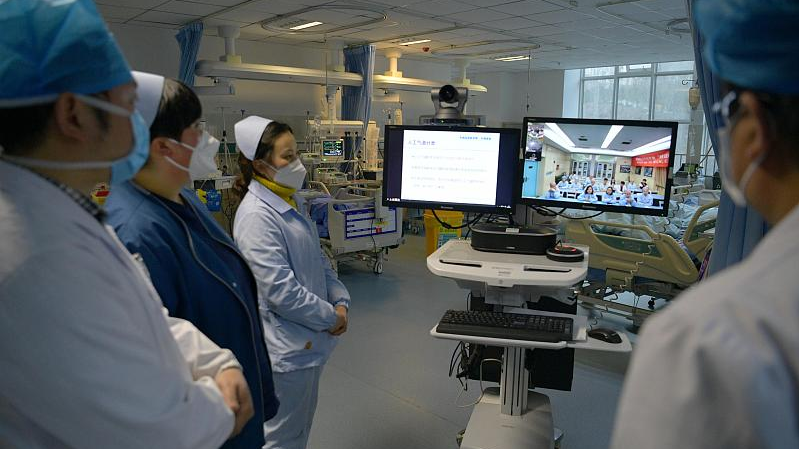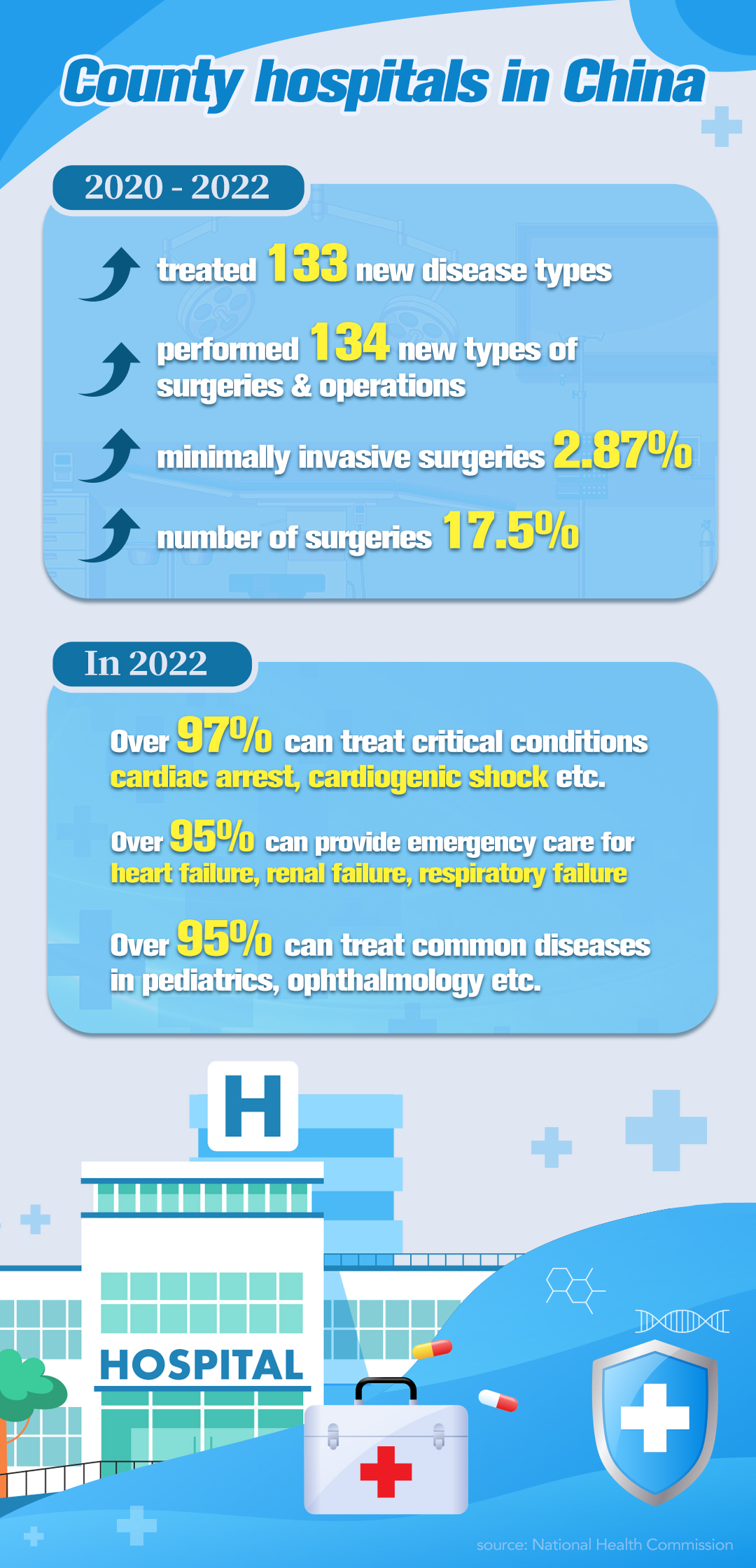
In late March 2019, the People's Hospital of Garze Tibetan Autonomous Prefecture in Sichuan Province made full use of remote medical and educational systems to establish a collaborative network between provincial hospitals, prefecture hospitals, county hospitals and township health centers. /CFP
In late March 2019, the People's Hospital of Garze Tibetan Autonomous Prefecture in Sichuan Province made full use of remote medical and educational systems to establish a collaborative network between provincial hospitals, prefecture hospitals, county hospitals and township health centers. /CFP
As an important link between China's rural and urban healthcare systems, county hospitals serve roughly 900 million people, or 65 percent of the country's total population.
In recent years, China has made remarkable strides to address the healthcare disparities represented by top-notch hospitals in big cities and township hospitals in rural areas.
Recognizing the significance of equitable healthcare access across the nation, the Chinese government has launched several key programs focusing on accessibility, affordability and overall effectiveness of healthcare services across the nation while strengthening county-level healthcare infrastructure.
One such initiative is the National Basic Public Health Service Program, which aims to provide essential healthcare services to every Chinese citizen, irrespective of their geographical location or socioeconomic background.
This comprehensive program covers disease prevention, health education, maternal and child health services, and basic medical care. By implementing this program, the government has bolstered the availability and affordability of healthcare services at the grassroots level, improving the overall quality of care.
In China, hospitals are classified according to a three-tier system. The tertiary class of hospitals have bed capacities exceeding 500 and are able to provide specialist health services as well as being responsible for medical education and scientific research. A secondary hospital is usually affiliated with a medium-sized city and contains between 100 and 500 beds.
By the end of last year, over 45% of county hospitals had reached the status of tertiary hospitals, while over 87% had become secondary hospitals, according to the latest report by China's Ministry of Health.
Meanwhile, the number of services offered by county hospitals has also increased significantly since 2020.

Formation of "medical communities"
To bridge healthcare disparities, local hospitals in counties and villages have been banding together to create "medical communities" where resources such as doctors and medical supplies can be shared more freely. This integration of resources at the local level has made quality healthcare more accessible to the country's rural population.
In Shandong's Jinxiang County, senior proctologist Zhuo Qinchao from the county hospital travels twice a week to Xiaoyun village to help diagnose and treat patients. With his help, the village hospital is now able to perform regular colonoscopy to diagnose and treat related cancer.
"Through the free flow of doctors and information, we can improve our ability to ensure quality healthcare at the grassroots level so that 90% of patients can be treated within the county," said Zheng Shimin, Party secretary at Jinxiang County in Shandong Province.
In recent years, Jinxiang's county hospital has formed a medical community with 14 other township hospitals, selecting 56 senior physicians to create a "grassroots office of experts."
"Diseases such as atrial fibrillation, ventricular fibrillation or coronary heart disease, for example, could only be treated in the county. But after the establishment of medical communities, doctors and medicines began flowing to our villages, and people stopped needing to travel to counties (to treat an illness)," said Zhao Zuquan, dean at Nongqiao Township hospital in Fuyuan, Heilongjiang Province.

Doctor Wang Xinli setting up a tablet computer for a remote diagnosis session for a patient with local county hospital in Yanchi County, Ningxia Hui Autonomous Region, China, December 9, 2020. /CFP
Doctor Wang Xinli setting up a tablet computer for a remote diagnosis session for a patient with local county hospital in Yanchi County, Ningxia Hui Autonomous Region, China, December 9, 2020. /CFP
Building the "five centers"
When 91-year-old villager Li Wen was struck with chest pain, the village doctor suspected he was suffering from a heart attack and gave him an immediate electrocardiogram (ECG) test. As the township hospital uploaded Li's information to the network of the local medical community, a diagnosis by the local county hospital soon confirmed the doctor's suspicion.
With the diagnosis, Li was swiftly transferred to the county hospital, where he received treatment that saved his life.
To enhance their ability to treat serious and critical conditions, county hospitals across China have accelerated the building of the five centers focusing on treating chest pain, stroke, pregnant women, children and infants in critical condition. So far, roughly 14,000 such centers have been built.
While significant progress has been made, challenges still exist. China's vast population and regional disparities pose ongoing hurdles to achieving uniform healthcare quality across all counties. However, the Chinese government's continued commitment to addressing these challenges through policy reforms, infrastructure development and human resource investment demonstrates a steadfast determination to improve healthcare quality for all citizens.
(Graphics by Zhu Shangfan. Zhong Xia also contributed to this article)